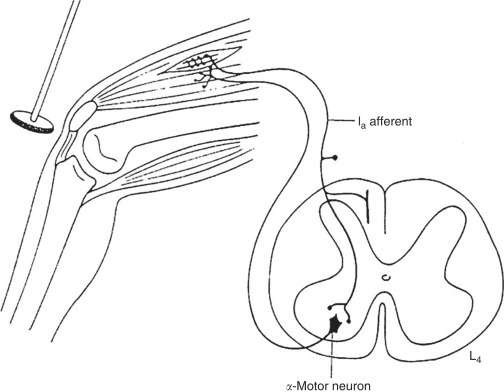A nurse is assessing a client who is experiencing hypovolemia. Which of the following manifestations should the nurse expect?
Epistaxis.
Headache.
Dizziness.
Shortness of breath.
The Correct Answer is C
Dizziness is a manifestation of hypovolemia, which is a decrease in blood volume due to fluid loss. Hypovolemia can cause orthostatic hypotension, which is a drop in blood pressure when changing positions. This can lead to dizziness, lightheadedness, or fainting.
Choice A is wrong because it is not a sign of hypovolemia, but rather a possible cause of it. Epistaxis is a nosebleed that can result from trauma, infection, dryness, or coagulation disorders.
Choice B is wrong because it is not a specific sign of hypovolemia, but rather a nonspecific symptom that can have many causes. Headache can be associated with dehydration, but it can also be caused by stress, infection, inflammation, or other factors.
Choice D is wrong because it is not a sign of hypovolemia, but rather a sign of fluid volume excess.
Fluid volume excess is an increase in blood volume due to fluid retention or overload. Fluid volume excess can cause dyspnea, which is difficulty breathing or shortness of breath.
Normal ranges for blood pressure are 90/60 mm Hg to 120/80 mm Hg for adults. Normal ranges for heart rate are 60 to 100 beats per minute for adults.
Nursing Test Bank
Naxlex Comprehensive Predictor Exams
Related Questions
Correct Answer is C
Explanation
This is because potassium is a medication that can cause cardiac arrest if given too quickly or in high doses. A nurse who administers potassium via IV bolus is not providing the standard of care that a similarly trained nurse would have offered under the same circumstances. This could result in harm or death to the patient.
Choice A is wrong because placing a yellow bracelet on a client who is at risk for falls is not malpractice, but rather a safety measure.
A yellow bracelet indicates that the client needs assistance with mobility and should not be left alone. This is a common practice in many health care facilities to prevent falls and injuries.
Choice B is wrong because leaving a nasogastric tube clamped after administering oral medication is not malpractice, but rather a mistake.
A nasogastric tube is a tube that goes through the nose and into the stomach to deliver nutrition or medication.
It should be unclamped after giving oral medication to allow the medication to enter the stomach and prevent reflux or aspiration. However, this error does not rise to the level of malpractice unless it causes harm to the patient, such as vomiting, choking, or infection.
Choice D is wrong because documenting communication with a provider in the progress notes of the client’s medical record is not malpractice, but rather a good practice.
Correct Answer is A
Explanation
This indicates that the client is receiving the therapeutic effect of magnesium sulfate, which is to prevent seizures by reducing neuromuscular excitability.

Magnesium sulfate is a mineral that is given intravenously to women with preeclampsia, a condition of high blood pressure, and protein in the urine during pregnancy, to reduce the risk of seizures or eclampsia. It can also prolong pregnancy for up to two days, allowing drugs that speed up the baby’s lung development to be administered.
Choice B is wrong because 1+ proteinuria via urine dipstick is not a therapeutic effect of magnesium sulfate, but a sign of preeclampsia.
Proteinuria indicates that the kidneys are not working properly and are leaking protein into the urine. Magnesium sulfate does not improve the outcomes for the baby and can cause side effects such as respiratory depression for the mother.
Choice C is wrong because a pulse rate of 100/min is not a therapeutic effect of magnesium sulfate, but a possible side effect.
Magnesium sulfate can cause vasodilation, which lowers blood pressure and increases heart rate. A normal pulse rate for an adult is between 60 and 100 beats per minute. A pulse rate higher than 100 beats per minute may indicate tachycardia, which can be caused by various factors such as anxiety, dehydration, fever, infection, or medication.
Choice D is wrong because urine output of 20 mL/hr is not a therapeutic effect of magnesium sulfate, but a sign of kidney failure. A normal urine output for an adult is between 800 and 2000 mL per day or about 30 to 80 mL per hour. A urine output lower than 30 mL per hour may indicate oliguria, which can be caused by various factors such as dehydration, blood loss, shock, or kidney damage. Magnesium sulfate can cause renal toxicity if given in high doses or for prolonged periods.
Whether you are a student looking to ace your exams or a practicing nurse seeking to enhance your expertise , our nursing education contents will empower you with the confidence and competence to make a difference in the lives of patients and become a respected leader in the healthcare field.
Visit Naxlex, invest in your future and unlock endless possibilities with our unparalleled nursing education contents today
Report Wrong Answer on the Current Question
Do you disagree with the answer? If yes, what is your expected answer? Explain.
Kindly be descriptive with the issue you are facing.
